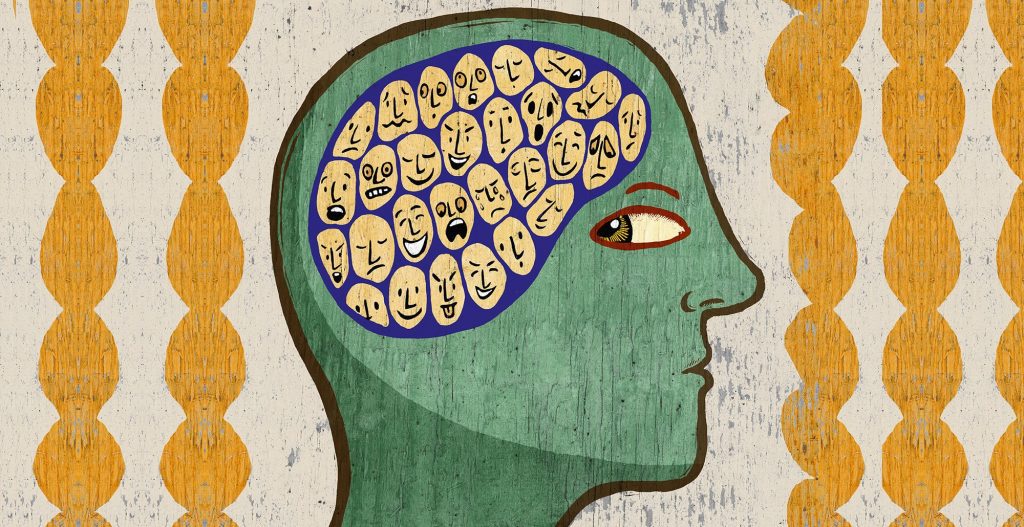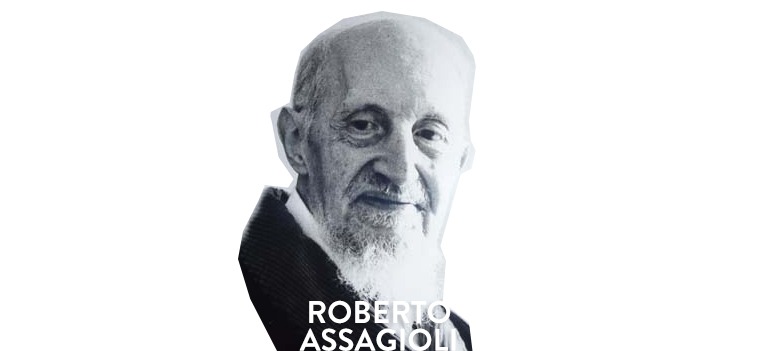Internal Family Systems - Meet your inner family
What would you say to a conversation with your Inner Critic, The Perfectionist or Inner Child? IFS therapy (Internal Family Systems Therapy) is a somewhat new, 30-year old psychotherapy method based on dialogues with parts of our personality. IFS claims that in each one of us exists a unique inner family, so called “subpersonalities”.

If you ever felt torn inside (for example one part of you wants to change your job and the other wants to stay in the current one),
or
if you hear different voices in your imagination (for example the unpleasant voice of your Inner Critic, who tries to cut your legs from underneath you).
or
if in the company of colleagues and friends you behave differently than in the company of your parents and totally different than in the company of your life partner...
...then thinking in the categories of “parts of personality” will become natural to you quite easily. The basis of IFS theory and model is the assumption that our personality consists of many “subpersonalities”, in other words - parts.
And we’re not talking here about the kind of division of our mind like Hollywood so readily scares us in movies about split personality or schizophrenia. We’re talking about a perfectly normal and healthy state of our mind, which - contrary to what most of the society believes - is not a solid, indivisible thing.
Understanding the multiple nature of our mind (“multiplicity of the mind”) on many levels changes how we perceive and treat ourselves and opens a whole spectrum of new possibilities in the context of psychotherapy and self-growth. I wrote about subpersonalities in my book “Insight. The road to mental maturity” in the chapter 9, Inner agreement. However, when I was writing this chapter, I didn’t yet know IFS therapy, which helped me to look at the idea of a divided mind on a much deeper level.
Before I write more about our main hero of today's article, the IFS method, I would like to show you how psychologists and psychotherapists during the last century came to the conclusion that our personality is built from many different parts - smaller personalities.
A change of paradigm
Everything started a long, long time ago… from two really smart guys - Socrates and Plato. They both claimed that mind is, at least, dual.
Sadly, for many centuries this idea wasn’t continued. First modern models of multiple personality came around 1890 and 1910. Sadly, most of them claimed that it is not a natural state of mind, but rather an effect of trauma, which fragmented our personality. However, even then some theories thought the fragmentation could be something perfectly natural.
Let’s have a little trip through time:

- The first theorist, which claimed that multiplicity is a natural state of mind and subpersonalities are valuable and not pathological, was Assagioli - Italian psychiatrist, the founder of psychosynthesis and Freud’s student, who stopped working with him 3 years earlier than Carl Jung.

- In the 1960’s Fritz Perls developed Gestalt therapy, which also took into account the multiplicity of personality. Perls talked about a common inner conflict between two parts: “topdog” (strict, critical part, behaving like a parent) and “underdog” (the childlike part, guilty and ashamed).

- Carl Jung, one of the most famous psychotherapists of our times, was convinced that our personality is formed from many different parts. Jung, during his early career years, noticed the multiple nature of our mind. He wrote: “The so-called unity of consciousness is an illusion… we like to think that we are one but we are not”. Jung conversed with his parts and discovered that in his psyche there are things he does not create himself, but which live a life of their own.

- In the 1960’s Eric Berne developed the Transactional Analysis, which took into account 3 groups of ego states: Parent, Child, Adult. Berne thought that our emotional states depend on the dialogues between certain parts.
- Modern times are abundant in approaches accepting the multiplicity of mind. The most famous are Voice Dialogue (Hal and Sindra Stone), schema therapy (Jeffrey Young; a subbranch of cognitive-behavioural therapty) or Focusing.
According to John Rowan, the author of the book “Discover Your Subpersonalities” there are over twenty synonyms for the word “subpersonality”, such as ego states, voices, energetic patterns, I subsystems, second personalities, deeper potentials and so on.
Subpersonalities in neuropsychology
Interestingly, this way of thinking about the human mind is currently confirmed by many known and respectable neuropsychologists. Technology, which allows us to precisely study the human brain, shows us that this most important organ work as a collaboration of different, autonomous “modules”.
Dan Siegel, a clinical professor of psychiatry at the UCLA School of Medicine writes that subpersonalities are “states of mind, which have a common pattern of activity in time. Those specialised “I” have a particular way of independent processing of information and achieving goals. Every person has many such codependent and at the same time individual processes, which exist in time, with a feeling of continuity which creates the experience of the mind.” (Siegel, 1999, pp 231). In turn, a neuroscientist, David Eagelman (Stanford University) compares the multiplicity of mind to a jury, who have to make a verdict, or to a democracy, which has to choose a single president.
I particularly like the approach of an american intellectualist and writer Douglas Hofstadter, who received a Pulitzer award in 1979, for a book about cognitive processes and intelligence. He speaks about subpersonalities from the perspective of neurology: “The mind, with its billions of neurons, is like a community made from smaller communities. The communities at the highest level (right under the level of wholeness) are something I like to call subpersonalities or inner voices… They are the competing aspects of ourselves, which try to govern the whole”.
Although both science and experience show that our mind is not a unity, for many people, sadly, the thought that we are a collective of many parts is something completely foreign. The idea that we are “lords of our mind” is comfortable - we like to think that we have our inner world under control. It’s much easier to control a whole mind, rather than a bunch of entities of an inner society.
Moreover, acknowledging the fact that we have different parts can mean that we will have to listen to them or to discover their emotions. That may not be pleasurable or comfortable. Our defense mechanisms can be very strong, making us afraid and discourage us to look within and to discover various parts of ourselves.
In truth, the change of thinking from “monomind” to “multiple mind” can have greater consequences in our lives than we might think. Why?
The fall of the “monomind” myth
Let’s take for an example our Inner Lazy-bones. This state in which we don’t feel like doing anything. If we experience it from time to time, there’s a big chance we sometimes call ourselves “lazy”, equating ourselves with this judgement. This judgement becomes a part of our personality and lowers our self-esteem.
When we see our mind as a one whole, every weakness and vice will be equated with our “self”.
But even those of us, who have an very active Inner Lazy-bones can experience, from time to time, the active and ambitious part of their personality. Judging ourselves based on one subpersonality is to ignore the whole richness of the inner world which creates us.
But what if you have more than just one of those destructive parts? What if, during a certain stage of your life, the dominating parts of your personality are Inner Critic, Lazy-bones, Guilt and Regret? Treating those states as an indivisible part of yourself, as an integral part of your character, can be a blockade on a very deep level.
In case of the abovementioned lazy part of the personality, it’s much more adequate to say “A part of me is lazy”, rather than judging yourself as a Lazy-bones. The awareness that you are not “damaged”, but only that some part of you (for some exact reason) forces you to act this way, can be very liberating. It gives you a sense of control and empowers your self-esteem.
Moreover, if we can’t see the whole richness of energies, motives, desires and experiences that exist in our psyche, our understanding of ourselves becomes very limited. From this perspective, we treat most of our behaviours as useless habits, as damaging leftovers from the past or as effects of mistakes in thinking.

Becoming aware of the module-type construction of our personality frees us from the destructive judgement of our own “Self” and helps to understand even the most problematic parts of ourselves. It is the basis for self-acceptance. In turn, solving inner conflicts and building peace and agreement between parts of self brings the end of the habit of self criticizing and autodestruction. It’s the basis of self-support.
Every conversation with parts of your personality will be a good opportunity to heal one aspect of your psyche.
When we look at ourselves from the perspective of a multiplicate mind and we interact with parts of our personality, we see the whole, amazing, inner world. Understanding how our parts work leads us to deep compassion, self-compassion and acceptance of even the darkest nooks of our personality.
All parts are welcome
Although it may seem strange, even the most extreme and destructive parts of our personality are necessary for us.
All those restrictive beliefs, destructive habits and harsh emotions are defense mechanism that make perfect sense. They are tools used by our parts to protect the most vulnerable in us. They do what they do, because they don’t know that they can do it differently. Some of them took on their roles when we were still children, others learned their roles from parents and caretakers.
Without understanding what IFS so accurately teaches us - that every part of our personality is in its essence good and has a positive intention - it’s so easy to judge, negate and struggle with those aspects of us that make our lives harder. And when we fight and struggle, and negate our inner voices - they become even more extreme, and the problem deepens.

In many therapeutic modalities our inner hardships are treated as if they are bad, as if they are something that needs to change - but the best way to free ourselves from emotional blockades is to look at them with openness, compassion and understanding.
And this is IFS’ motto: “All parts are welcome”. When we look within ourselves, putting those words into practice, we open the way to inner transformation. Deep and meaningful change happens when a certain subpersonality realizes that it doesn’t need to fill its role and can support us in a different way.
Sadly, most of psychotherapeutic modalities still partake in the monomind paradigm and the solutions they propose enhance this mindset. Someone who has some sort of mental disorder will therefore think he is completely “disordered”. Not only he has no control over some part of himself, he also thinks he has a faulty mind. In many situation this way of thinking can greatly hinder the ability to regain health.
There are also psychotherapeutic modalities that make this important step in the right direction. For example the mindfulness movement or ACT (Acceptance and Commitment Therapy). The essence of those approaches is the separation of thoughts and emotions and observing them with kindness and acceptance. Even though they suggest to look inside ourselves with greater empathy, both methods don’t suggest to come into interaction with our emotions or ways of thinking. This interaction is present in the IFS model and it opens many ways to deepen the understanding of your own self and healing of inner wounds.
Now, let’s take a closer look at how the Internal Family Systems model understands human psyche and how it differs from other psychotherapeutic modalities.
Internal Family System
Before IFS saw daylight, its future creator, Richard Schwartz was a family therapist. Working with his clients he began to pay closer attention to the language they used. While describing their inner world the clients often used the word “part”, saying for example: “a part of me wants to get a divorce, and a part of me wants to continue this relationship”.

Schwartz decided to listen to his intuition. Following his clients, listening to what they say about parts of their personality, he discovered something, that forever changed his career and led him to create the IFS model.
Paying close attention both to his own parts and to “internal families” of his clients, Schwartz learned that subpersonalities are not merely mechanical functioning of our psyche, or a fleeting state of mind, which passes within a few moments. Subpersonalities are like little people who live within us. They form around certain needs (safety, belonging, self-actualization and so on) and they have their own desires, fears or habits. They are linked to particular emotions and have certain beliefs.
For example, Perfectionist is something much more than just a need to do everything perfectly. This part of our personality can be linked to:
- A belief that if we make a mistake, others will criticize us,
- A feeling of inner compulsion and pressure focused on making every single project absolutely perfect,
- Tensions in the body, which happen every time we work on something,
- A habitual obsessive checking of every detail of our work
- A need to avoid a feeling of rejection, which can happen if we make a mistake,
So the Perfectionist is like a complete personality, which, together with other parts, comes together as something we call “I”, our personality.
Depending on the situation, different parts become active. Have you ever noticed you behave differently in various situations? We behave in one way when we are with friends on holidays, and another one when we meet our parents. In one moment we can be full of hope, thinking about the future, and in another we can feel our life lost its meaning. Every one of us has plenty of different, often clashing, feelings, which live in us at the same time. Some are active and dominant, others may be muffled or locked in the cellar of our subconsciousness.

If we aren’t paying attention to how our body reacts and what thoughts (voices) arise in our head in a particular moment, we won’t notice that during a single day few or even multiple parts can be active (John Rowan, british psychotherapist, in his book “Discover Your Subpersonalities” writes that we usually have 4 to 9 main subpersonalities).
Richard Schwartz learned all this already in the 1980’s, however his first book about the model he created was published in 1995. He writes about the IFS as a model of psychotherapy, a model of mind and a life practice.
I think it’s not an exaggeration to say that IFS has a good chance to “stir things up” in the psychotherapy world. Insightful assumptions and unique techniques that are a part of this model are like a breath of fresh air, in comparison to other therapeutic systems, which effectiveness can be questioned.
In what ways does IFS differ from other models of psychotherapy?
Free 3-day IFS course
Get access to my 3-day IFS introductory online course and get to know IFS therapy in an experiential way.
IFS vs other psychotherapy models
Looking at our personality as a being consisting of many parts is nothing new. How is IFS different? There’s many points, but the following 3 are the most important:
- Discovering relationships between parts
Contrary to other therapeutic systems which consider working with subpersonalities, IFS focuses not only on particular parts, but most of all on the relationships between them. So the whole system is important, our internal family.
Noticing the key meaning of relationships between individual parts was possible for Schwartz mainly because of his practice as a family therapist. When he applied his knowledge about family systems to the inner world, he understood, that looking at relations between particular parts of personality helps us to learn the source of many troubles people struggle with.
It seems that it is hard to understand the actions of one subpersonality (and also to help it change its role and function in the system) in separation with other parts, with which it can be in conflict with, which it can try to protect or be protected by.
Even therapies most focused on working with subpersonalities (Transactional Analysis, Gestalt therapy) don’t pay attention to the relationships created between the parts of the personality.

- Creating relationships with parts and supporting them
The most important thing in many systems working with parts is interacting with what lives within us. Jung wrote about it, Perls (Gestalt therapy, empty chair technique) practised it, Hal and Sindra Stone (Voice Dialogue) talked about it.
But only IFS has the goal of A) establishing deeper relationships with our parts and B) supporting them in freeing themselves from blockades, emotional baggage and the roles they serve.
A) What does it mean to establish a relationship with a part? The members of our internal family can like or dislike us, they can trust or mistrust us, they may want to talk with us, or not. Just like with people we meet in the outside world, we can come into various relationships with our inner parts. A good relationship with members of this internal society is key in IFS therapy, because only when they are open to dialogue they will tell us what they are afraid of, what they run away from, what they desire and who they protect. Only then they are willing to cooperate with other parts.
B) IFS not only comes into dialogue and builds relationships with parts we find in ourselves. In this approach it is important to help the parts. Some of them need support to free themselves from their destructive roles (Perfectionist or Inner Critic), and others need support from their emotions or beliefs they learned through various experiences in the past (guilt, grief, regret or beliefs like “I’m not worthy of love”). To this end Schwartz created a process called “unburdening”.
- The Self, detaching from parts
Schwartz discovered that the biggest obstacle in making relationships with each part are other parts which burden us with fear, anger or regret. For example, when he asked one of his clients what is his attitude towards his Inner Critic, the client replied “Im mad at him”. In IFS it means that through the client spoke a part which feels anger towards the Critic and the client judges the Critic from the perspective of this part.
When Schwartz began to ask his clients to ask those judging parts to move aside, they entered a state of full openness, curiosity, peace and compassion - towards the part they wanted to work with. This was a state in which they didn’t identify with any part - they found some space for awareness and deep peace. Being in this state made creating relationships much easier and understanding the core of the problem - much quicker.
The founder of IFS called this state “Self” and described it as a state of mind, which is full of empathy and curiosity - a state in which we know what is good for all our parts. Every one of us has a Self in the core of our existence. Even people who went through heavy trauma or those afflicted with psychological disorders. According to Schwartz, Self is characterized by “8 C”: Compassion, Curiosity, Calm, Clarity, Courage, Connectedness, Confidence, Creativity.
Self is different from all other parts we have. It is both one of the parts (an active internal leader for other parts, with a broader perspective) and a higher state of consciousness. Achieving access to this state is often the first and the most important step of IFS therapy. Without this, effective work with parts proves to be difficult or even impossible.
Self is a state, which, except for the “8 C” has an inner wisdom about how to relate to other parts of personality in a harmonized, loving way. It is this aspect of our psyche which is responsible for the ability to self heal.
In IFS it is the Self that is the fragment of our psyche which meets each part and builds relationships with them. The more the subpersonalities trust the Self, the more space they give him to be a leader of the system and the more harmony we experience. The role of the therapist is to help the client enter the Self and, from this perspective, interact with members of the internal family. Thanks to this, the client doesn’t become reliant on the therapist.
The great trinity
Another difference between IFS and other systems of psychotherapy is highlighting of the 3 types of subpersonalities which live in our internal family. They are 1. Exiles, 2. Managers and 3. Firefighters.

- Exiles
They are those parts of personality, who (usually during childhood) were in some way hurt and then they were “frozen in time” in a particular memory, carrying within them various emotional baggage. Getting through to them and freeing them from this baggage is the main goal of IFS, however it doesn’t always happen from the beginning. To be able to meet the exiles we need the approval of managers - the parts which are responsible for the protection or imprisonment of the exiles in the dark cellars of our subconscious mind.
Many of us have quite a lot of these parts, without even knowing about them. We are raised to negate our weaknesses and troubling feelings. That’s why we are prone to trauma - when some parts of us suffer, we deny them, and what comes next - they not only suffer, but are also abandoned. This way, they become exiles.
For this to happen, we don’t need any “typical” big trauma (like abuse by our parents, death of a close relative or rape). Sometimes even simple events (a comment from a teacher, being left alone for a few hours by our parents) can become a wound that will later influence us for the whole life. Even though we don’t consciously remember, it influences us all the time - we experience it as lessened self-esteem, fear of failure or other emotional blockades, which are not a mental disorder, but still prevent us from living in harmony and satisfaction.

- Managers
The exiles do everything they can to be noticed, that’s why they will constantly bring up memories and emotions, reminding us about them - so that we pay attention to them and take care of them. Sometimes they even flood us with troubling emotions and that’s what the managers fear most. Their role is to keep our psyche stable and that’s why they try to do whatever they can to enable us to function in our reality without constant breakdowns. They are the part which drives our everyday life.
The main goal of managers is to keep the exiles imprisoned for their own good and for the good of our whole psyche. They prevent the activation of those parts in various way - their favourite tools are: phobias, obsessions, compulsions, passivity, emotional indifference, panic attacks, depression, hyperactivity, nightmares.
The most common managers are:
- Controller - the part which wants to have control over everything, because it believes that any kind of surprise will unleash emotions connected to a wound,
- Perfectionist - when he will be perfect, no one will reject him and so - he will not recall any troubling emotions of abandonment,
- Passive Pessimist - he avoids interpersonal interaction though passivity and withdrawal, so that he won’t be close to other people (closeness can unleash denied, troubling emotions),
- Caregiver - he cares for everyone around, but not for himself, and uses this as a strategy to run away from his own emotions.
An important discovery by Schwartz, mostly about managers, is that the dominant behaviour of those parts is not their essence, but rather an extreme role they were put into. For example - Inner Critic doesn’t need to be a critic, his role is different - to motivate - when we are able to communicate with him and show him the damage he does with his criticism.
The change happens fastest when, during the IFS therapy, we slowly allow the exiles to free themselves from their emotional baggage. Then, the managers no longer need to protect us from the emotions which were dangerous before - because they were healed. In this moment the managers usually easily change their way of influencing us and we experience it as a lasting change on a deep level.

- Firefighters
There are situation, in which managers can’t keep the exiles in their cages. Then, emotions overwhelm us and this is a fire that needs to be extinguished quickly. In those moments the firefighters come to the forefront of our mind - the parts that want to ease and soothe the troubling emotions.
Firefighters have the same goal as managers, but different roles and strategies. Managers are proactive (they prevent the emotions of going outside), but firefighters are reactive (they act, when the damage is already done).
They are responsible for addictions. Using various forms of substances is the easiest way to quench a fire. The most common strategies are: binge eating, eating sweets, smoking cigarettes, drinking alcohol, taking drugs, watching pornography, gambling or shopping.
What’s interesting is that firefighters come during the process of therapy. When the person, with the help of a therapist, starts getting close to the troubling emotions (and starts coming into contact with the exile) the firefighter comes and creates psychophysiological reactions like sleepiness, dizziness, distraction - everything that can help run away from what is important.
In summary, these are the most important assumptions of IFS therapy:
- We all have parts that create our internal family,
- We all have access to Self - a state in which we don’t identify with any part,
- Every part is good in itself and has positive intention. There are no “bad” parts, which would need to be eliminated,
- Our subpersonalities create a complex system of relationships between them.
IFS in self-growth and as a psychotherapy
IFS works great both for people who are completely healthy and those that suffer from various disorders.
In the first case, therapy can be about low self-esteem, chronic stress, impulsive anger, deep sadness or regret, dealing with bereavement, fear of failure, fear of intimacy, shyness and many other problems with destructive emotions or limiting beliefs.
In the second case, IFS method can be used to work with:
- Trauma
- Depression
- Addiction
- Post-traumatic stress disorder
- Compulsive behaviours
- Phobias
- Neurosis (anxiety)
- Bipolar disorder
- Anorexia and bulimia
The method can be used for individual therapy, but also couples, family and group therapy.
The good news is that working with a therapist is not the only option to use the IFS method. Richard Schwartz also encourages autotherapy (self-work in your own home), but it’s worth to know the model and its techniques well to make autotherapy possible and safe.
Jay Earley wrote a long-titled book “Self-Therapy: A Step-By-Step Guide to Creating Wholeness and Healing Your Inner Child Using IFS, A New, Cutting-Edge Psychotherapy”. In this book he shows how we can use IFS for ourselves.
Since 2015 Internal Family Systems therapy is an evidence based psychotherapy according to NREPP (National Registry of Evidence-based Programs and Practices). This registry was created by Substance Abuse and Mental Health Services Administration (SAMHSA) which is a branch of the U.S. Department of Health and Human Services
IFS was judged as effective for improving general functioning and well-being and as promising for reducing phobia, panic, and generalized anxiety disorders and also for improving physical health conditions, psychological resilience and treating depression.
It’s important to mention, that although during the IFS therapy we deal with particular problems or emotions of a person, who searches for inner change, each session brings more, far-reaching, positive “side effects”. When we learn to listen to parts of our personality with openness and compassion (without judging or trying to change them), our relationship with ourselves changes. We acquire the ability to “detach” from our emotions and to observe them with curiosity and acceptance. We experience greater inner harmony and achieve greater emotional stability.
IFS therapy can be seen as a path, which leads us into love and self-compassion.
Every dialogue with a part of our subpersonality is an occasion to understand and love another fragment of yourself. The whole process can be an opportunity for deep and lasting transformation of how we perceive ourselves.
From my point of view the Internal Family Systems model is much more than a method of psychotherapy. It’s a way to experience yourself, a way to experience people around you and to experience life itself.
How does IFS therapy look like in practice?
Every IFS session is like a tiny trip deep into yourself, where you experience a slightly different state of awareness. You briefly remove yourself from the outside world and focus inwards seeing all the nooks and crannies inside your own subconscious mind. For many it’s quite an intensive experience after which you can hear words like: “I just touched something deep and important”.
In most cases IFS therapy is a process, during which you have your eyes closed. The role of the therapist is to guide you in establishing connections with particular parts, to help you converse or negotiate with them, to free the hurt parts from their burden. In some situations the therapist can use different techniques in which - instead of communicating with your parts by yourself - you act as if you are that part, by sitting on a chair. Then you go into a dialogue with the therapist from the perspective of your part (the “direct access” technique).

After the initial assessment and learning about your most important parts and the relations between them, the therapist will ask you to find the feelings you want to look at, which influence you in a negative way, or which are connected to the problem you want to work with. After you focus your attention on the feeling, he will ask you what image comes into your mind. People see their parts in various ways - sometimes cartoon characters, other times their parents or loved ones, sometimes items like chains, balls, carrots or clouds.
When you see the visual representation of this part, the therapist will begin guiding you through a dialogue with this part, proposing some questions and following what happens inside you. This process happens in a trance-like state. Your whole focus is put inwards.
The therapist may ask you to ask your parts questions such as:
- What is your role? Why do you do what you do?
- What are you afraid would happen, if you stopped doing your role?
- What other part are you protecting?
- With which part are you in conflict with?
- What would have to happen to make you stop influencing part X?
Each of those questions allows you to better understand the essence of a particular part and also the dynamics of your inner world. The fascinating this is that you don’t need to consciously look for answers to those questions. When you have good contact with your parts (everyone, no exceptions, can have a good contact with his or hers internal family, sometimes you just need to learn it), the answers appear spontaneously. We know full well when the answer comes from the part we are speaking with.
It’s surprising how quickly and easily people recognize their parts of personality. When they break through the illusion of oneness of personality, the focus on subpersonalities becomes easy, the idea of multiplicity of mind begins to make great, intuitive sense.
Step one: relationship and trust
One of the most important goals of IFS therapy is reaching the exiles, and then healing them by releasing them from the burden they carry (and through taking them out of the past they are stuck in). This element brings the most important changes in the inner world. A side goal of the therapy is gaining access to the state of Self and distinguishing it from other parts, so that Self can become the leader for the whole internal family. When both those goal are realized, the client - step by step - discovers a great feeling of harmony, which radiates throughout his whole daily life.
But before the meeting with exiles becomes possible, the client has an important task to fulfill. It’s creating a good relationship with managers, who have a tough but important task. As I wrote earlier, this group protects or “imprisons” the exiles. Reaching the exiles without a care for managers can harm the client (treating the managers with contempt can lead to them becoming even more extreme in their actions).

That’s why we can make the next step in therapy only after we gain the trust of a manager and when he allows us to meet the exile. There are many important reasons for this, but there is no space here to go into them. Caring for the safety of the whole system is key in IFS and there are plenty of elements in the process that support this.
Of course, not every session leads to getting access to exiles or freeing them from the prison they are in. You can’t always establish a relationship or gain the trust of a manager or firefighter. Each problem is different, each inner family is different and each client has a different rhythm of work. If the problem is tougher or if the mental disorder is deeper, establishing a relationship with a part can require multiple sessions.
Despite this, every meeting with members of this inner community brings us greater awareness, better understanding of ourselves and greater feeling of harmony.
Sometimes the very act of being open and curious towards a certain part of yourself makes all the difference - especially when, for many years, we had no idea it existed or when for years we hated it and fought with it.
What’s interesting, after an IFS session we can sometimes experience a so-called “change in system”. It’s a slight discomfort, because “bricks” in the mind were moved. If you wore braces it can feel similar to the process of tightening, when the dentist corrects teeth placement and we begin to get used to it after a few days of slight discomfort. Similar thing happens when we change our beliefs or free ourselves from difficult emotions in IFS - something we wore for many years in our head or body suddenly disappears - and you have to get used to this new, slightly alien, system.
Sometimes after a good IFS session, the clients Inner Sceptic appears and says: “this was too easy to be true/effective/lasting.” It’s a natural reaction, because we are not used to having deep changes in such a short amount of time. For therapists working with Internal Family Systems model it’s a common occurrence.
Internal Family Systems around the world
The IFS model gains more and more recognition around the world. Richard Schwartz gives lectures at major conferences about trauma and mental health, where he shares his discoveries. IFS therapist training gathers more people years, which can be seen mostly in USA and UK.
When I learned about this model of therapy I began reading all the books about IFS that I could find. After getting a solid base of knowledge about how IFS looks in practice, time came for months of experiments - both self-practice (in the form of autotherapy) and as a therapist for my friends and people who agreed to be my “lab rats”. I owe a great deal to my autotherapy. I will never forget how, lying in bed during one of my stays in Bali, Indonesia, I looked inside myself to find a small boy, bound by rope, all trembling with fear. Taking care of this part of myself and freeing it from the ropes brought a great change in the area of my relationships. I feel the effects of this change to this day.
Practicing IFS in the role of a therapist to support other people brought effects that exceeded my expectations. Soon I felt that’s what I was looking for. It became clear that I found an approach which resonates with me fully and gives me great possibilities to help other people.
At this point, I have finished the 3-level IFS training and I use this model exclusively to help people I work with. If you want to book an IFS therapy session with me, please click here.
In order to promote IFS therapy, I created a simple website - IFS Poland - with all information about IFS therapy you may be looking for. You can read there more about how a session looks like, IFS certification process, self-therapy and much more. Also by signing up for our newsletter, you will receive a free the “Self-therapy with IFS” ebook.
If you already have experience in IFS model and want to gain more confidence with the flow of the IFS model and bring more Self into your therapeutic relationships, I recommend you "The Self-led therapist" online course. It's created the therapist with nearly 30 years of experience – the IFS lead trainer, Osnat Arbel, PhD and will let you dive deeper into the IFS model.
The information I provided in this article is a drop in the ocean of what we already know about the functioning of our inner families and how to help them achieve balance, fulfillment and harmony.
I will gladly answer any of your questions about the IFS model, so if any come to you - leave a comment.
